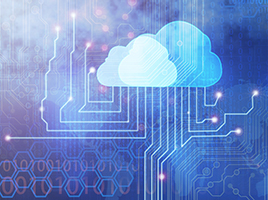Working from home has gained a lot of popularity in the wake of the pandemic. And it seems like many companies have decided to transition to this model for the future. While that’s great, it’s not something that can be executed in a few easy steps. This is true for large and small organisations alike. If you want to keep things running smoothly while maintaining a large portion of your workforce at home, you’ll need to make some serious changes. This is even more valid for new hires. You’ll need to ensure that you have a good system in place for onboarding people and integrating them into your organisation as smoothly as possible.

Local Hardware or Remote Connections?
One of the big decisions you’ll have to make going forward is if you want to issue employees with hardware that they will use at home, or if you’re going to handle that through remote connections. Both have advantages and disadvantages. Relying on a remote connection setup can minimise your hardware costs, and can help you provide a more standardized environment for everyone to work in. On the other hand, it’s not an ideal solution for certain types of work where latency can significantly impair a person’s productivity. Video editing is a good example of that, as is testing games.
IT Support Will Matter More Than Ever
Don’t ignore the potential for things to go wrong in an environment like this. Lacking on-site support can significantly slow down certain processes, and you’ll have to adapt the company’s structure to that. Working with a competent external IT support provider is pretty much required if you want to avoid issues. A good company for IT support in Kent – like Impreza IT – needs to provide a number of specialized services, including Microsoft Teams support and implementation. Adapting IT to a remote working model can be a difficult ordeal, but not when working with a company of this rank. Impreza will also be able to guide you through the overall requirements of your new setup, and the intricate details that you’ll have to navigate around.
Integrating New Employees
As we mentioned above, one of the biggest challenges you’re going to face when transitioning the entire company to a work-from-home model is the onboarding process for new employees. You can’t handle that without at least some personal interactions in most cases, and you’ll want to account for that. On the other hand, a well-designed system can allow you to hand off hardware to the people who need it and have them do everything else at home. This includes signing contracts, setting up their work environments, going through training, and so on. If you do all of that properly, you can save a lot of resources in the long run. You can also ensure that your company will be much better prepared to handle its growth in the future, and you’ll know what kinds of issues to anticipate on that front. The long-term benefits of this kind of setup are not to be ignored and being prepared for another global event is something that’s becoming more and more important.







